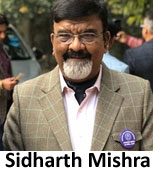When a community is visited by a catastrophe, a leader given to demagoguery speaks with ‘passion’ to extricate oneself from any criticism. The newspapers in the national Capital decided to billow city’s chief minister Arvind Kejriwal’s appreciation of the rescuers more than the hot winds would have billowed the blaze in Mundka which devoured about 30 lives.
None questioned why public had to run rescue operations for full 90 minutes before the fire-tenders arrived on the scene. The Aam Aadmi Party (AAP), post the catastrophe, has been firing all cylinders to pass the blame of the aphonic leadership of Delhi BJP, which has been at their wits end on how to respond to the flurry of charges.
In an eye-witness account, water-conservation activist Diwan Singh wrote in a social media post that even after the fire vehicles arrived the rescue work could not be started because they were ill-equipped to reach out to people on the third and fourth floors. He mentions how the fire-officials went helter-skelter seeking help from local people to give a semblance of shape to their so called rescue operations.




